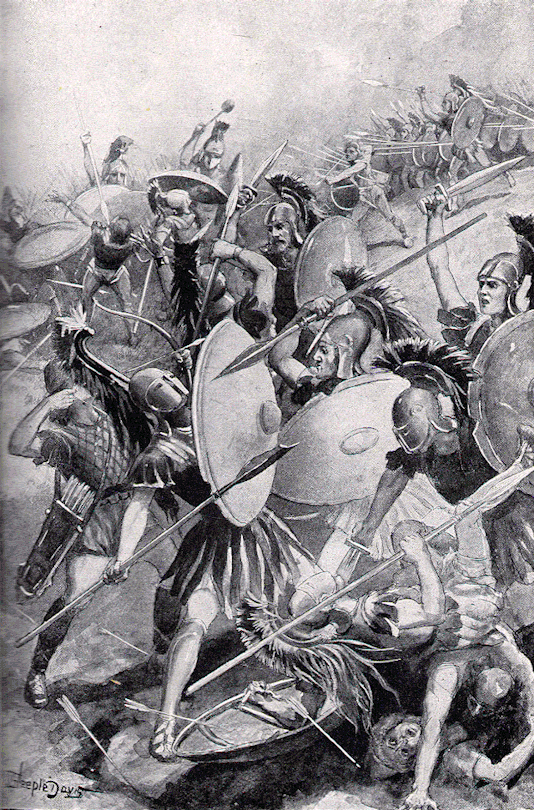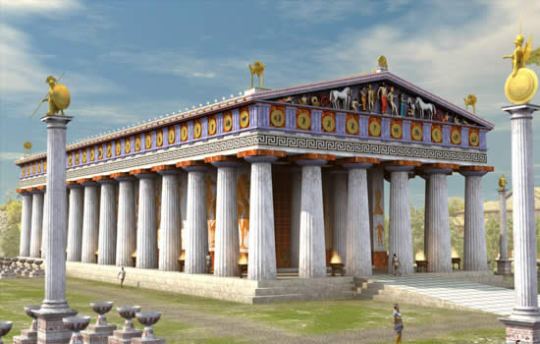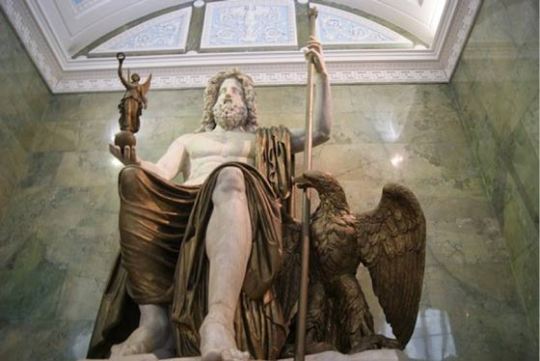Photo


The Battle of Leuctra took place in 371 BCE. This battle is significant for Thebes’ victory over Sparta. Thebes became the most powerful city-state in Greece; Sparta lost this prestige and power. What began this battle was the demand from Sparta for Thebes to get rid of their Boeotian Confederacy. Thebes denied the demands, but Sparta seemed prepared to have been rejected because Sparta already had their army in position for war at the western border of Boeotia before the answer was even given from Thebes. The person who led the Thebes to victory was a general named Epaminondas. On the battle field, Spartan’s leader Cleombrotous positioned his troops in the traditional formation; he had two wings each with heavy-armored hoplites. Epaminondas however, used a different tactic which was not new, but it had not been used. He also had two wings, but made the left wing stronger and used calvary in the front of the hoplite lines. Thebes also attacked at an angle, employed echelon formation, and went for a direct frontal attack on the opposing commander’s position; this led them to victory over Sparta. This battle is significant for having the Peloponnesian League broken since many switched to have an alliance with Thebes, and also Thebes’ victory destroyed the streak of Spartan victory. Sparta had 200 years of victory up until this battle. Athens ended up calling for a peace conference in 371 BCE, but Thebes denied. Sparta and Athens became an alliance, which Epaminondas defeated at the battle of Mantineia in 362 BCE. During this battle, Epaminondas also lost his life. The earliest source of this battle is Xenophon, who witnessed it and wrote about it. He claimed that Spartans had a disadvantage in this battle because many Boeotian camp followers left to join the Theban army. 1000 Lacedaemonians fell during this battle, including 400 Spartan hoplites.
https://www.ancient.eu/Battle_of_Leuctra/
https://sourcebooks.fordham.edu/ancient/371leuctra.asp
https://www.pinterest.de/pin/76631631145934820/
0 notes
Photo

The Peloponnesian war was a long span of battles between ancient Athens and Sparta that started in 431 BCE, which Sparta did win. Sparta and Athens were two big powers in Greece, but with Athens growing faster and better than Sparta. Athens already had built a fleet of more advanced ships with the help of their allies and dependents. The first Peloponnesian war was between Athens and Corinth. According to Thucydides, this war began with the city of Epidamnus losing power in battles with neighbors and barbarians. The city reached out to Corcya for aid and protection but were denied. Epidamnus ended up surrendering to Corinth, where they were able to find protection. When the Corcyraeans heard about this, they took fire. Some of the events that took place during this war Athens crushing a revolt on Lesbos, launching an expedition against Megara and Boeotia which was another failure and involved a defeat near Delion. Athens also took Spartan land of Kythera. Overall, the war brought upon changes and developments in warfare, the phalanx became bigger than it originally was and therefore hoplites were threatened by the deployment of combined arms and the use of mixed troops. The aftermath also included Spartan being dragged into another conflict because of their never ending determination; it was Corinthian wars with Athens, Thebes, Corinth, and Persia. This was ended with the “Kings’ Peace” in which Sparta lost empire control to Persia and were left to dominate Greece. In 423/421 BCE, a truce was called and a 50 year peace was agreed. Alliances were made between Mantineia, Argos, Elis, Corinth, and the Chalkidians, and Sparta formed an alliance with Boeotia. This was all crumbled with a major battle at Mantineia where Sparta defeated Argos and the allies, which led to the war taking a turn for the worse with Sparta killing all of the citizens of Hysiai and Athens executing the citizen of Melos.
https://www.sutori.com/story/the-peloponnesian-war-timeline--PUCb3VL1ou7hi7e2kkGZ9RNy
https://www.ancient.eu/Peloponnesian_War/
http://classics.mit.edu/Thucydides/pelopwar.8.eighth.html
http://classics.mit.edu/Thucydides/pelopwar.1.first.html
0 notes
Photo

The Olympian Games, now famous and called the Olympic Games, began in 776 BCE. The games began in Olympia, an isolated place located in western Peloponnese. Before the games, Olympia was known to be a religious shrine. It is now associated with athletics and the games, with honor going to Zeus. There is a quote from Pindar, a Greek lyric poet, in which he says, “Ample is glory stored for Olympian winners…but only by the help of Zeus is wisdom kept ever blooming in the soul.” How the games started is associated with the religious aspect. For some background information, the Greek calendar divided the year into months. There were no subdivisions into weeks, which meant no weekends. What happened instead was that the Greeks held festivals at intervals during the month. These festivals were religious and were in honor of Zeus. These festivals typically included the sacrifice of an animal and with the festival came celebration. There would be singing, dancing, and sports. The Olympian Games basically began as a celebration to the festival. The games included running, boxing, wrestling, chariot races, and other sports. The contestants were divided into men and boys, ages twelve to eighteen. The first prizes were given for running, followed by boxing. In the 14th Olympiad, the double course was introduced. In the 18th Olympiad came pentathlon and wrestling. In the 23rd Olympiad there were prizes for boxing. Most of the games had a crown of palm as the prize which would be placed into the right hand of the winner. Women were in fact not allowed in the games and to see the games, until eventually Hippodamia assembled the Sixteen Women. Their games consisted of foot races for maidens and they would participate in age order. At these games, there would be a lot of cheering and excitement all around. The smell of water, food, fire, sweat and the feeling of the hot sun beaming on your skin. This would mostly appeal to athletes and those who enjoy sports.
https://medium.com/@jana.sukhanova/olympic-games-17a31c3e3d54
https://www-proquest-com.eznvcc.vccs.edu/docview/222231570?accountid=12902
https://sourcebooks.fordham.edu/ancient/greekgames.asp
0 notes
Photo


The temple of Zeus is another great site I was able to see. It was built around 470-456 BCE, but it took centuries to complete. It is located south-east of Acropolis. The significance of this temple is that it was created to honor the Greek god Zeus, but also in relation to the Spartans’ victory at Tanagra. Evidence of this victory can be seen on the temple itself, in the middle of the top of the temple there is a gold shield in commemoration of their defeat, it created the apex of the temple. This temple was first constructed by Libon of Elis, and completed by Roman emperor Hadrian. The sculptures on this temple are stunning, they are said to align with Olympia and the activities taking place. You can see the sculpture of the battle between the Lapith Greek men and the Centaurs at the wedding of Perithoos on one end, and on the east pediment you can see a chariot race between Pelops and Oinomaos, held by Zeus. This temple is made of limestone and marble, and on it you can see the two pediments I mentioned and twelve metopes. Another significant thing about this temple is the Corinthian columns; there are twenty columns on the long end of the temple, and eight on the short side of the temple. There were originally 104 columns that could be seen, now it is 15. Another significant thing about this temple is the sculpture of Zeus himself. The statue of Zeus was 40 feet tall and occupied the whole area of the aisle of the temple. It was carved from ivory and Zeus was seated on a throne made of cedarwood, inlaid with ivory, gold, ebony, and stones. When visiting this temple, you can smell the grass and nature since it is such an open space outside. Those who are fascinated with history and art visit the temple, as well as athletes since the Olympian games were known to have started in his honor.
http://www.olympia-greece.org/templezeus.html
https://www.ancient.eu/article/815/temple-of-olympian-zeus-athens/
https://www-proquest-com.eznvcc.vccs.edu/docview/216509170/fulltextPDF/B8EF5C371318498BPQ/1?accountid=12902
https://classicalwisdom.com/culture/sculpture/the-statue-of-zeus/
0 notes
Photo

Today I visited The Parthenon. It was built on Acropolis of Athens around 447 and 438 BCE. Inside this building, there was once a sculpture of the goddess Athena, who it was built for. There were sculptures that represented the birth of Athena, but they got removed or destroyed with all of the changes it underwent. It went from being turned into a church to becoming a storage for gunpowder which resulted in the explosion that destroyed parts of this building. You can see more of the missing pieces in person. Also at the time, this building was made of ivory and gold. To represent the birth of Athena, there were sculptures that showed Poseidon and Athena arguing over the country. Athena won this by producing the first olive tree, which in return the Athenians built the Parthenon in her honor. There are multiple sculptures within this building, each with their own significance and story. The Parthenon provides a great example of certain artistic qualities because there are many metopes, frieze, and pediment sculptures that are seen on it. They represent Athenian mythology and culture. The metopes include scenes from the Trojan War, battles, Gods and Giants, just to name a few. The Parthenon is made of Pentelic marble and is the greatest monument that represents Doric architecture in all of Greece. People are more amazed when they see this building in person because the pictures do not do it justice. There are eight Doric columns on the outside at each end, and seventeen Doric columns along each side. Inside the Parthenon, there were two chambers; one being for the goddess Athena and the other being used to keep the treasury. During my visit, I have seen many tourists. People interested in Greek mythology, history, or even art are more prone to visit the Parthenon. The sound of this place is quiet, as many people are in awe and admire, only side conversations about how beautiful the building is and its significance can be heard. You can feel the wind, smell the air, feel the heat, all while admiring this building.
http://web.archive.org/web/19981203044014/http://www.vacation.net.gr/p/akropoli.html
https://www.ancient-origins.net/news-history-archaeology/parthenon-athens-epic-monument-or-mystery-measurements-005497
https://www.khanacademy.org/humanities/ap-art-history/ancient-mediterranean-ap/greece-etruria-rome/a/the-parthenon
0 notes